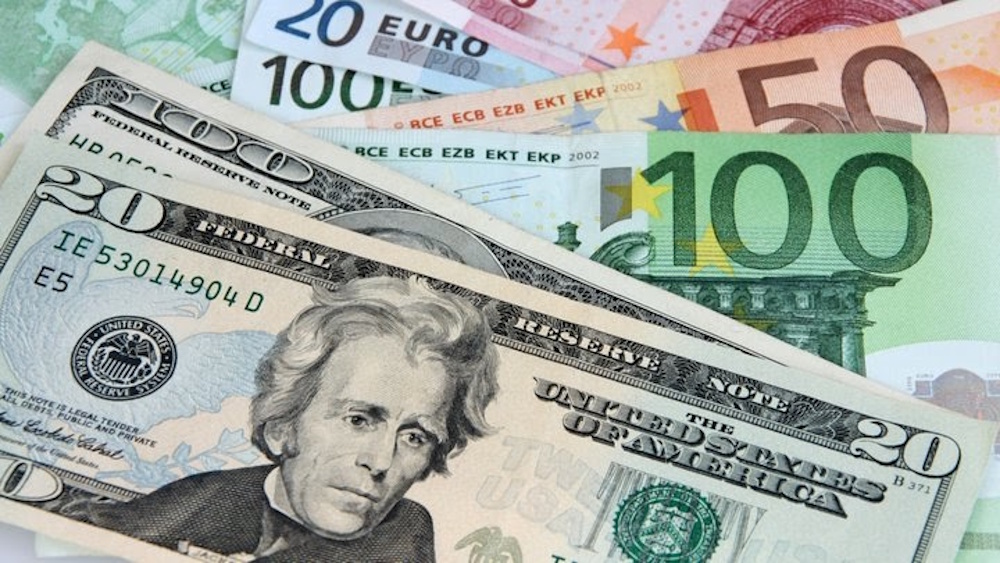The EUR/USD currency pair demonstrated a consistent recovery on Thursday, rising 0.36% to 1.1529, following a significant bounce from a three-month low of 1.1468 earlier in the week. The decision came after a volatile midweek session characterized by varied U.S. macroeconomic data, accommodating signals from Federal Reserve officials, and a positive shift in sentiment among Eurozone equities and corporate earnings. The pair has now entered a pivotal technical range between 1.1540–1.1580, where market participants are evaluating the potential for a breakout to realign the trend bias towards bullish for the first time since mid-September. The U.S. Dollar Index has decreased to 99.99, indicating a slight pullback from the 100.35 resistance level, as market participants processed mixed economic indicators. The Employment Report indicated an increase of 42,000 jobs in October, surpassing consensus estimates of 32,000 and recovering from September’s decline of -29,000. However, the unexpected positive outcome did not lead to prolonged strength in the dollar, as other metrics indicated a decline in momentum within services and consumer demand. The ISM Services PMI registered at 52.4, slightly exceeding September’s 50.0, indicating that the leading sector of the U.S. economy is still growing, albeit at a more gradual and inconsistent rate. Meanwhile, traders prepare for comments from FOMC member Christopher Waller later Thursday, as well as Friday’s University of Michigan Consumer Sentiment index, anticipated to be at 53.0, a decrease from 53.6, to assess if Fed officials are still inclined to maintain steady rates for an extended period.
In light of the robust U.S. employment figures, bond yields experienced a decline, with the 10-year Treasury yield hovering around 4.09% and the 2-year yield at 3.57%. This shift has resulted in a reduced attractiveness of the dollar compared to the euro. The current macroeconomic environment, along with the anticipated increase in Eurozone retail data (+0.2% MoM) and robust corporate earnings, has enabled the euro to recover after a prolonged period of capitulation selling. In Europe, there was a notable increase in optimism as PMI data exceeded expectations and retail consumption showed signs of stabilization. Eurozone retail sales are projected to increase by 0.2% month-over-month, an improvement from 0.1% in August, indicating that consumer activity remains resilient in the face of the European Central Bank’s tight monetary policy. Enhancing equity market performance—especially in German and French indices—further bolstered the euro, as investors moved away from the U.S. dollar’s safe-haven trade. Corporate earnings from major European multinationals surpassed expectations this week, alleviating concerns about a worsening slowdown. The Stoxx 600 index experienced a recovery of 0.7%, marking its first consecutive gain in more than two weeks. Meanwhile, the bond spreads between Italian BTPs and German Bunds tightened to 1.32%, indicating a shift towards risk-on sentiment.
The Federal Reserve continues to exercise caution, yet it does not adopt an overtly dovish stance. Amidst ongoing speculation regarding a potential December rate cut, with a market-implied probability of 62%, officials seem divided. They highlight that robust employment figures and persistent service inflation warrant maintaining the current rates for a longer duration. Fed futures indicate that there will be no additional rate hikes, yet they also signal that rapid easing is not on the horizon. Meanwhile, the European Central Bank adopts a neutral stance, recognizing disinflation while sustaining a restrictive policy approach. Core inflation has decreased to 3.4% year-over-year, marking its lowest level since early 2022, which provides policymakers with the flexibility to maintain their current stance. Joachim Nagel stated on Thursday that “policy is working, but cuts remain premature,” emphasizing that future decisions will be guided by growth data rather than inflation targets. The pair is currently confined within a descending price channel, yet it is beginning to exhibit preliminary indications of a potential reversal. The pair has approached the 20-day EMA at 1.1543 and is now targeting the 50-EMA around 1.1597, a point that aligns with the descending trendline resistance established from the August highs. A break and sustained close above 1.1580–1.1620 may indicate a shift in the technical structure towards bullish territory, with an initial target of 1.1665 and a potential extension to 1.1720 if momentum increases.
Immediate support is established at 1.1470, representing the weekly low and a crucial pivot area. Below this, 1.1440 and 1.1409 act as essential downside indicators; breaching these levels would reinforce the prevailing bearish trend with potential movement towards 1.1340, which was last examined in June. Momentum indicators present a measured sense of optimism. The RSI has shown a rebound to 53 from 36, indicating a reduction in selling pressure. The MACD histogram has turned positive on the 4-hour chart, and the ADX reading at 18 suggests a weakening of bearish control. Volume analysis indicates a resurgence of buying interest from 1.1480–1.1520, a range where institutional orders are likely to have built up. The data indicates that speculative positioning on the euro has reduced net shorts by 9,400 contracts, implying that traders are decreasing their dollar-long exposure. The one-month implied volatility has decreased to 6.1%, approaching a five-month low, indicating a market that is seeking confirmation prior to making a directional breakout commitment. Options pricing illustrates this uncertainty: the 25-delta risk reversal shifted marginally towards euro calls, changing from -0.40 to -0.12, marking its most balanced position since August. Market participants seem to be taking measures to protect themselves from potential upward movements instead of wagering on ongoing declines. Retail trader sentiment exhibits a mixed outlook, as 52% of traders maintain a net long position on the pair. Concurrently, institutional models indicate a neutral to mildly bullish bias extending through mid-November.

